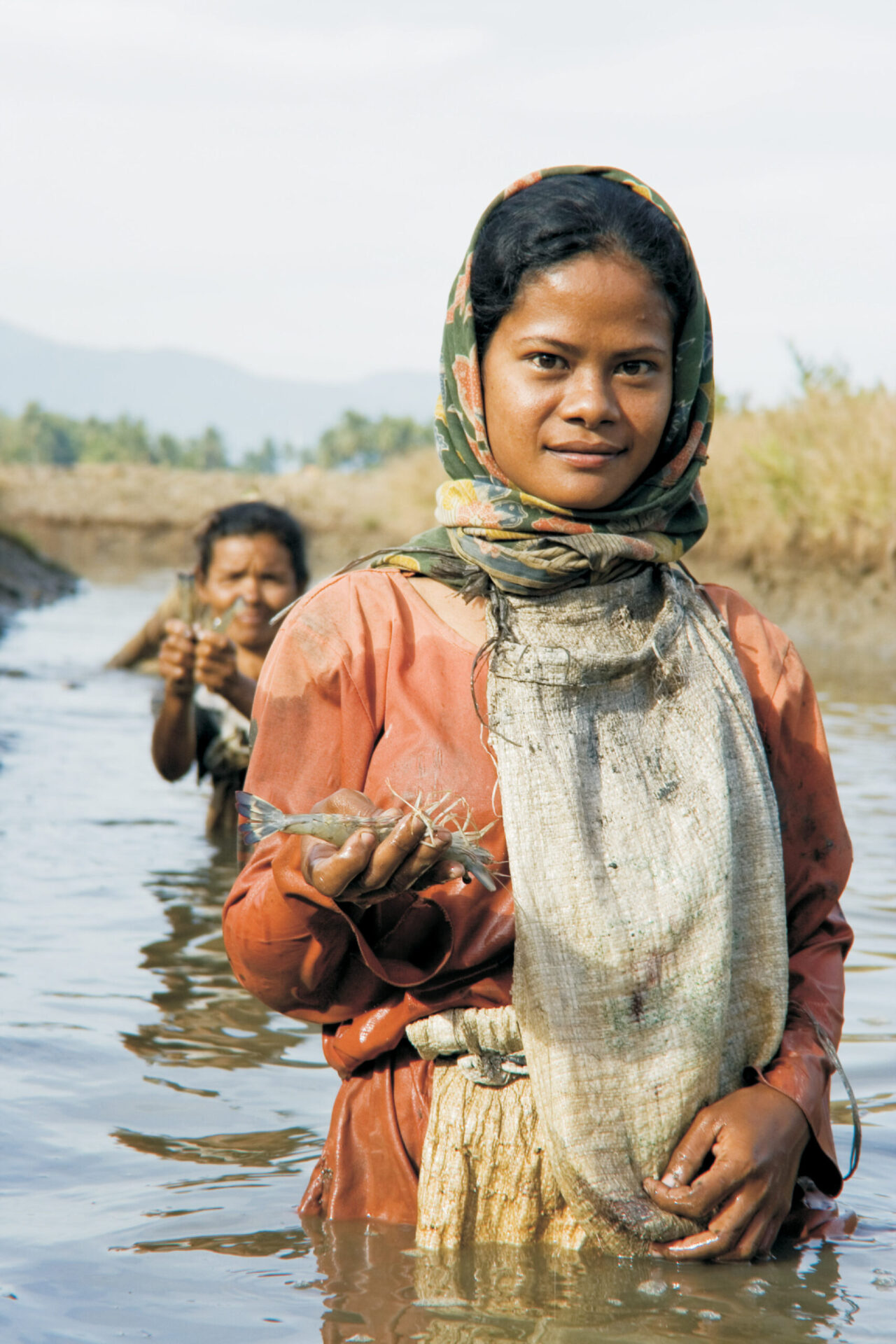Understanding social equity and sustainability interactions in the SDGs: Gender differences in food security

Introduction
The world has made tremendous progress in food production in the last few decades, lifting people out of poverty and greatly reducing hunger and malnutrition. However, women and girls are still likelier than their male counterparts to go hungry or eat poorly.
The Sustainable Development Goals (SDGs) provide an opportunity to address these inequities, specifically through SDG 5 – “Achieve gender equality and empower all women and girls” – and SDG 2 – “End hunger, achieve food security and improved nutrition, and promote sustainable agriculture”.
This SEI discussion brief* aims to lay a foundation for research on how to bridge those two goals by identifying key interactions between them, including potential synergies and trade-offs. The analysis also identifies knowledge gaps and questions to prioritize in future research.
*Download the full text from the right-hand column.
Bridging science and policy for gender equality and food security
The SDG document, or ‘Agenda 2030‘, pledges to leave no one behind and “seek to realize the human rights of all and to achieve gender equality and the empowerment of all women and girls”. To achieve these commitments it will be crucial to integrate the pursuit of the stand-alone SDG 5 on gender with actions to achieve the other SDGs. Integration is not the norm in policy-making, however. Indeed, decisions are often taken without consideration of how different policy realms interact, resulting in incoherence. Agenda 2030 provides a new framework for cooperation, bringing the multiple policy dimensions into sharper focus, and calling for a closer look at interactions across different areas of policy. The goal is to ensure that efforts to advance the different SDGs work in tandem, supporting one another instead of leaving gaps or even creating conflicts.
Methodology and motivation
The literature review that forms the basis of this brief examined how interactions between gender and food security have been documented in studies around the world, aiming to identify patterns, areas in which policy lags behind scientific knowledge, and gaps in the knowledge.
Policy-makers ultimately need guidance that directly addresses issues they may face, and explains and quantifies the potential impacts of policies that they might pursue to achieve one or both of these SDGs.
Research findings
The literature review and analysis, building on an ICSU framework for understanding SDG interactions, finds approximately twice as many positive (enabling) interactions as negative (constraining) interactions in the literature, regardless of which of the two goals triggered the interaction.
The authors note that most SDG 5-sourced influences related to ensuring women’s rights to agricultural inputs, and to equality in law and empowerment. SDG 2-related interactions were negative when related to the improvement of women’s position in the family, and positive when related to ending violence to women, and to ensuring equality in law and empowerment.
The review suggests that most research thus far has focused on how gender equality and women’s empowerment affect food security outcomes. This finding suggests that more research is needed on how different dimensions (availability, access and use) of food security (SDG 2.1) impact on women’s roles and positions in society. The review also highlights potential problem areas where interactions deserve more attention from policy-makers, such as possible impacts on women’s position in the family.
Knowledge gaps and research needs
The discussion brief helps to unpack some of the main interactions, synergies and conflicts between the goals of gender equality and agricultural sustainability, but much more remains to be explored to better understand the issues. Further research should examine, test and explore in greater detail several important, additional questions, such as:
-
Can sharing of unpaid/domestic work (such as car- ing) by both women and men also lead to both goals of enhancing women’s empowerment and creating food- secure households?
-
What can we learn about the role of men in ensuring wom- en’s empowerment, gender equality, and food security?
-
Can policies to alleviate poverty eliminate household food insecurity, while also dealing with the need to em- power women, and to face the changes in women’s lives as the result of increasing globalization?
The analysis suggests two main targets for intervention: 1) social/cultural norms that give strong priority to males in some societies, and 2) economic and legal structures that discriminate against women. Governance tools are needed to promote the synergies and reduce tensions and trade-offs among the various goals and targets of SDG 2 and SDG 5. Monitoring data and monitoring systems are equally important. Further key questions are:
-
What monitoring tools could be employed by public bodies at national levels, and by civil society organizations at local levels, to enhance synergies and reduce con icts?
-
What principles should be used for constructing suitable new indicators derived from challenges identified in SDG 2 and SDG 5?
Overall, then, despite general awareness, little in-depth research has addressed the ways in which different dimensions (availability, access and use) of food security (SDG 2.1) and policy-making in this area affect gender roles and women’s empowerment. Establishing links between qualitative research and other methods, including system models, is also necessary. Gender equality is arguably the single most important determinant of food security, and these two goals must be strived for through stronger partnerships within and across research, policy and practice.
Suggested Citation:
Taylor, R., M. Coll Besa, N. Matin and M. Davis (2017) Understanding social equity and sustainability interactions in the Sustainable Development Goals: Gender differences in food security. SEI Discussion Brief, Oxford, UK.
(0) Comments
There is no content